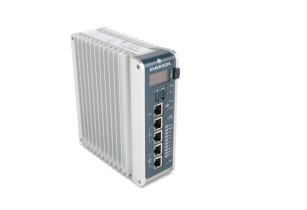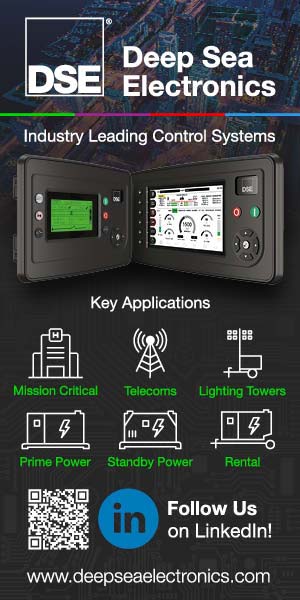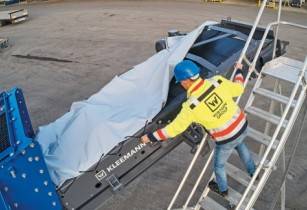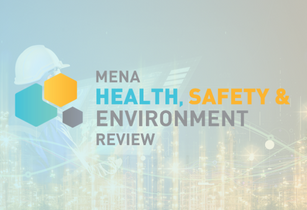Denka Wangdi, of Emerson?s machine automation solutions business, explains how the gathering, storage and analysis of detailed operational and diagnostic data by modern edge controllers provides significant benefits for pipeline operators
Industrial Internet of Things (IIoT) technologies are initiating an exciting era of digital transformation and creating widespread opportunities for performance optimisation. These technologies include smart digital devices such as industrial edge controllers, which provide reliable industrial control and enable IIoT-capable data communications. Edge controllers can collect, store and analyse huge amounts of process data and provide actionable insights leading to improved decision-making. A good example of how this technology can be used to achieve significant performance improvements is in pipeline operations.
Data collection challenges
Many pipelines in operation today were installed as far back as the 1950s and 1960s. Typically, pipeline automation such as programmable logic controllers (PLC), remote terminal units (RTU) and supervisory control and data acquisition (SCADA) technologies were installed. As these technologies have become obsolete, the pipelines have been updated incrementally. However, there is still a great deal of legacy hardware installed, and significant amounts of valuable data is often trapped in remote locations. Even if the data could be obtained, its accuracy can be questionable, since older pipelines were not equipped with condition monitoring equipment to identify leaks.
When end users are updating or redesigning their pipeline automation, they would ideally like to preserve the robustness of their existing systems, while also taking full advantage of the latest opportunities for digital transformation. In addition, they would like to future-proof their systems as much as possible. Edge controllers are a solution that enables these challenges to be met, while also providing significant additional bene?ts.
Modern edge controllers
Today?s robustly-packaged edge controllers are physically similar to traditional PLCs and RTUs. The difference is that, while edge controllers incorporate a real-time operating system (RTOS) for deterministic direct control, much like PLCs or RTUs, they also add a general-purpose operating system (OS), such as Linux, to perform advanced computing and communication tasks. The RTOS and general-purpose OS are fully independent of each other in terms of the hardware and software, but with the use of industry-standard OPC UA communications, they can be con?gured to interact with each other efficiently and securely.
The RTOS element of an edge controller can easily perform the traditional control logic functions. An edge controller can therefore simply be used as a replacement for a PLC, reserving its more advanced capabilities for future implementation. However, the real bene?ts of digital transformation start to be realised when the integrated general-purpose OS is employed.
Huge amounts of process data can be collected, stored and analysed by the edge controller?s general-purpose OS. Advanced algorithms and logic can be executed, with the results transmitted securely to the RTOS element of the controller as required, to implement responsive low-latency control. Alternatively, the general-purpose OS can securely communicate data to supervisory systems for further evaluation. The general-purpose OS includes features that many conventional components lack, such as a ?rewall for security. It is also equipped with`IT-aware? communication protocols such as MQTT, which are an ideal solution for the low-bandwidth telemetry connections typically available to pipeline operations.
Increased access to digital intelligence ? whether peer-to-peer in the ?eld or up to an on-premises or internet-based cloud ? helps operators make better decisions and work collaboratively, and represents a cultural bene?t achieved through digital transformation.
 Challenges for pipeline operations
Challenges for pipeline operations
Edge controllers are an ideal solution to many challenges that are speci?c to pipeline operations. The all-in-one nature of edge controllers enables end-users to enhance basic control schemes with closely integrated on-board visualisation options. The detailed operational and diagnostic information that is made available this way can be of significant benefit to operators and maintenance personnel.
Among the key operational challenges faced are leak detection and corrosion monitoring. Operators need to be informed as quickly as possible when issues arise but also need to avoid the expense of deploying personnel unnecessarily if there isn?t a major problem. Edge controllers can address these and other issues by providing the information necessary to enable good alarm management.
Some of the latest leak detection and corrosion monitoring systems can provide extensive data. However, this can only be acted upon responsively if the data is communicated to the operations and maintenance teams. Edge controllers can act as the gateway for this information, connecting to these sensing systems via traditional I/O wiring, or with more advanced serial or network communications. In addition, they perform data logging to identify slow-moving changes trending towards an eventual problem, and carry out other preprocessing, such as ?ltering, to minimise false alarms.
Surge control can also be a major challenge for many pipeline operations. Edge controllers provide a solution by enabling each local controller to better interact with upstream and downstream stations and to responsively coordinate operations with a central control room. Having more data and computational power available enables users to implement advanced surge control automation schemes.
Conclusion
Having the ?exibility to apply edge controllers to new or existing pipeline automation systems is an important benefit in many applications. Edge controllers can enhance PLC and RTU solutions by adding integrated monitoring, data processing and visualisation features to the basic control functionality. In addition, edge controllers can be seamlessly added to existing automation systems to add IIoT capabilities without having to disrupt operations.
Although pipeline operators are becoming increasingly aware of the significant bene?ts offered by digital transformation, they may still be cautious about how to proceed. Edge controllers are an ideal solution for bringing IIoT advantages into an operation, while preserving existing investments. By using edge control devices and IIoT concepts, end-users have the opportunity to solve many of their vital challenges and improve their pipeline operations.
Visit the Edge Devices and Software section for more on the technologies to help advance your digital transformation initiatives.




























